Reduziere Neurodermitis
mit Sanubiom SkinCare Protect mit Phage Technology
Stewardess disease is a chronic skin disease. The medical term for the “stewardess disease” is “perioral dermatitis”. The rash is characterized by red, itchy skin, particularly around the mouth and nose . Stewardess disease is therefore also known as erysipelas.
It mainly affects women between the ages of 20 and 50. The cause is irritation of the skin on the face, which can be triggered by dry air or too many skin care products. With the right treatment, stewardess disease is easily treatable.
It is neither contagious nor dangerous. Nevertheless, the typical appearance, with red and irritated skin on the face, is a burden for those affected.
In addition, the dry skin feeling and the often occurring, painfully inflamed blisters around the mouth are very unpleasant . As is the constant feeling of tightness.
In this article, you can find out what causes perioral dermatitis, what its symptoms are, how the skin condition is treated and what you can do to help.
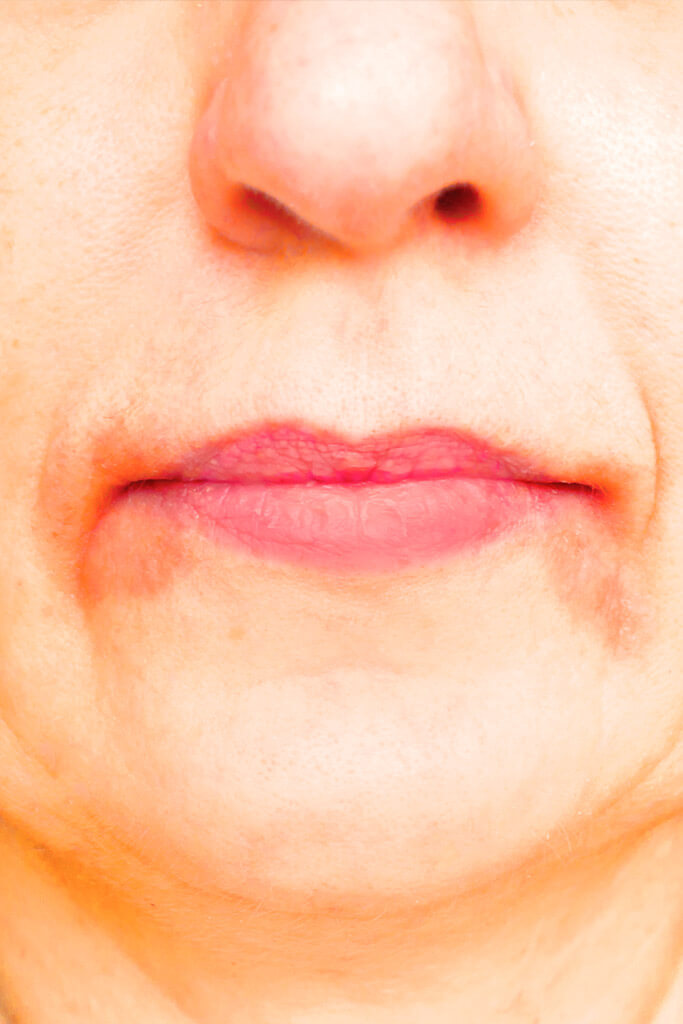
SKINCARE PROTECT
Probiotic skin protection SkinCare Protect with Phage Technology.
Your skin comes to rest.

Perioral dermatitis is an inflammatory skin rash. There is no need to panic, as it is not contagious and not dangerous.
Nevertheless, it is a burden. This is because the rash typical of the disease, also known as erysipelas, can be itchy and tense. The exact causes are not yet known.
In addition to a genetic predisposition, so-called “over-care“ofthe skin also appears to play a role. In other words, the use of skin care products that are unsuitable for your own skin type if you have rosacea-prone skin.
It is therefore an important topic in perioral dermatitis care. In addition, perioral dermatitis often affects young women. Hence the colloquial name “stewardess disease”.
The term stewardess sickness is based on the cliché image of the flight attendant, namely the image of a young, always well-groomed woman.
Those who work as stewardesses often have to contend with stressed skin. Dry air on airplanes and frequent use of make-up lead to sensitive rosacea skin. Over-care of the skin and strong external stimuli lead to stewardess disease.
Stewardesses are the prime example of this disease. That is why it is called stewardess disease.
Perioral dermatitis usually appears as a rash around the mouth and nose. But this skin problem is also possible around the eyes. The skin may also become tight and pimples and pustules may develop.
Although the disease is known as stewardess disease, it also affects women in offices or salesrooms with dry air. As a rule, this usually affects women between the ages of 20 and 50.
Those affected often react by increasing the use of cosmetics, which only further irritate the skin and promote severe inflammation. This means that even more moisture is lost.
The main symptom of perioral dermatitis, also known as stewardess disease, is a red and inflamed skin rash.
This redness is often accompanied by pustules. In the worst case, nodules develop. This appearance is sometimes reminiscent of acne or rosacea.
The small, sometimes numerous pustules or blisters can also coalesce into larger affected areas.
These are called plaques. The areas of skin that suffer from perioral dermatitis tend to itch, tighten and feel dry.
Even if the disease is harmless, itchy and dry skin is extremely unpleasant.
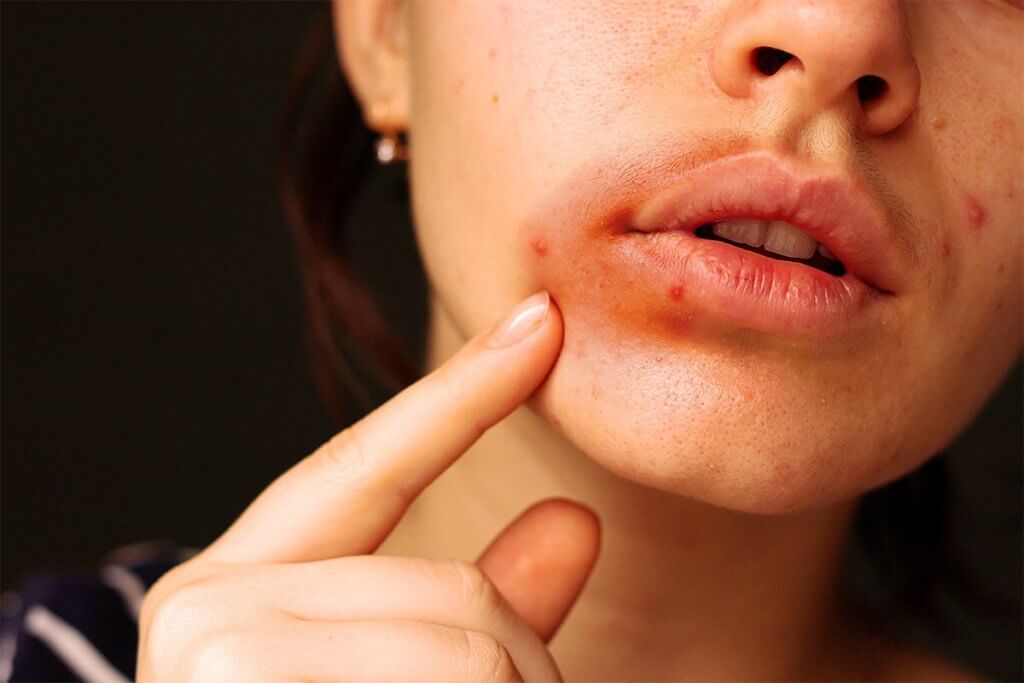
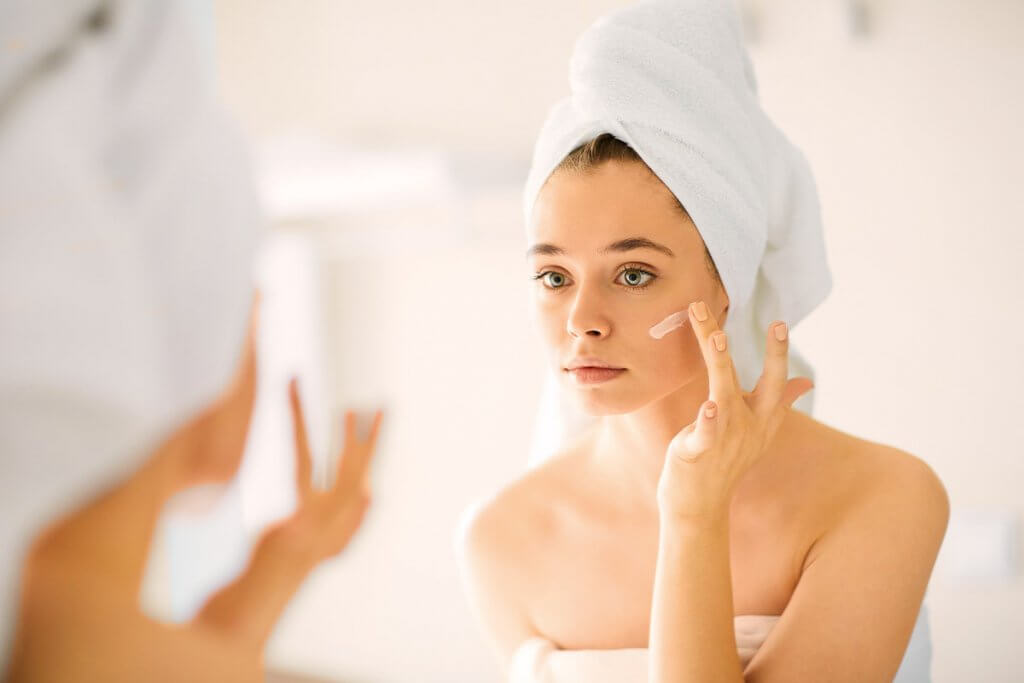
The rash is typically located around the mouth of the affected person. This is how perioraldermatitisgets its name.
This name is also due to the fact that the rash has visual similarities with shingles. The area immediately next to the red of the lips is not affected and forms a strip free of the rash.
Not only the region around the mouth can be affected. The redness often also appears around the nose or on the chin. They occur less frequently on the rest of the face, such as the forehead or the side of the neck, but these areas can also be affected.
The skin disease is particularly rare around the eyes and on the eyelids. Here we are talking about periorbital dermatitis.
The small pustules of perioral dermatitis in particular are visually similar to acne. But there are significant differences.
In contrast to acne, erysipelas is not accompanied by blackheads, pimples or comedones. It is always advisable to have the skin complaints examined by a dermatologist in order to obtain a clear diagnosis.
This is because the diseased skin has very different needs depending on the specific disease. The wrong therapy could harm her further.
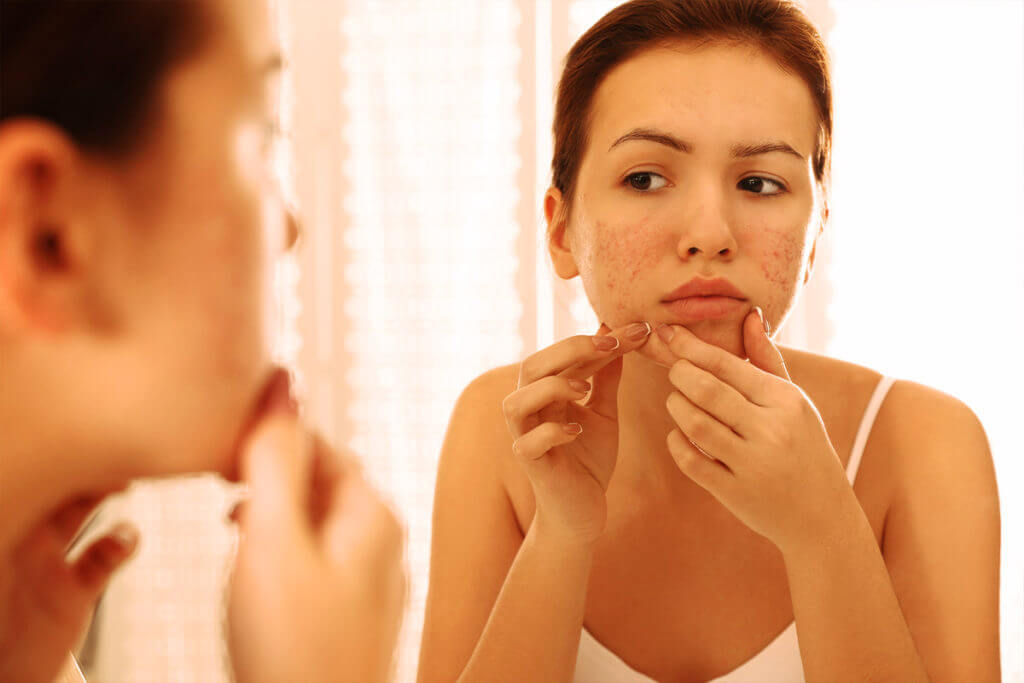

Unfortunately, the exact cause of perioral dermatitis and why it occurs is not yet fully understood. It is assumed that, in addition to the genetic predisposition, the care behavior of the affected persons towards their skin plays a decisive role.
If the skin is not cared for according to its needs, i.e. its type, this can lead to so-called “over-care”. Excessive care means that the skin can only perform its functions, such as producing sebum, to a limited extent.
Feelings of dryness and the typical rash develop. The skin tightens. Attempts are often made to treat stewardess sickness with more care – creating a vicious circle of over-care.
There are also other factors that can promote perioral dermatitis. These include:
These factors should be avoided as far as possible. This is easier for some than for others.
Always avoid the sun in the case of perioral dermatitis. At least for a long time. A high sun protection factor can be used daily to protect against the sun in the case of perioral dermatitis and rosacea.
If you have problems with the ingredients of toothpaste, it is advisable to clean your face with lukewarm water after brushing your teeth. Various relaxation techniques, such as meditation, can reduce stress.
A mouth and nose mask can also promote perioral dermatitis. As important as these are and as effective as they are in protecting us from the coronavirus, they create a moist environment that can attack the skin barrier.
The friction of the mask is also irritating. It can help to wear as little or as light cosmetics as possible under the mask. Avoiding irritating substances such as alcohol or fragrances in skincare products also helps.
Everything about masks here: Maskne – Impure skin & pimples due to mouth-nose protection
A little trick: A folded and regularly changed paper handkerchief under the mask reduces the build-up of moisture. This is how the skin gets through Corona safely.
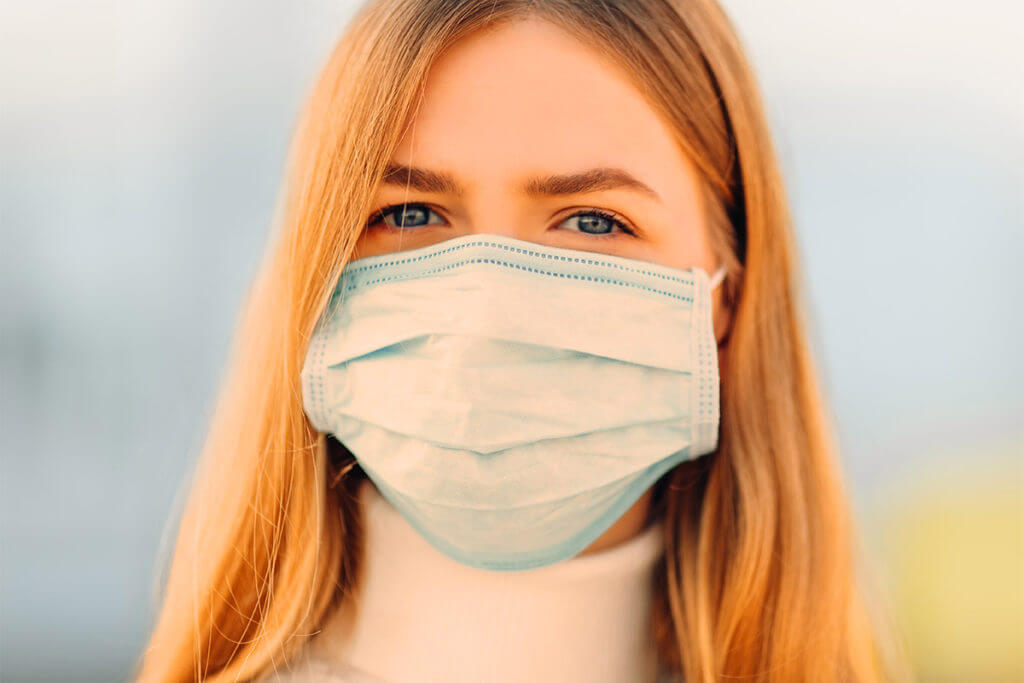
Perioral dermatitis mainly affects younger women between the ages of 20 and 50. Young children can also suffer from it. The gentlemen were lucky.
Oral rosacea only affects men in the rarest of cases. In contrast to women, 6% of whom are affected by the disease. In men, it only occurs in a percentage of 0.3%.
This may be due to the overuse of cosmetics by women. Incorrect or excessive use of skin care products or make-up can lead to skin disease. An additional hereditary predisposition accelerates the process to the point of inflammation.
Stewardess disease can easily be confused with acne or rosacea. It is therefore an important first step to consult a dermatologist right from the start.
This will determine how long the rash has been present and which care or other products are being used. Of course, he will also get a thorough picture of the condition of the skin. This enables a comprehensive diagnosis to be made.
Stewardess disease is not chronic, which means that the disease is curable. It is important to avoid make-up and chemical skin care products for several weeks.
The symptoms often subside on their own. You can prevent a recurrence of the symptoms with the right diet and skin care.
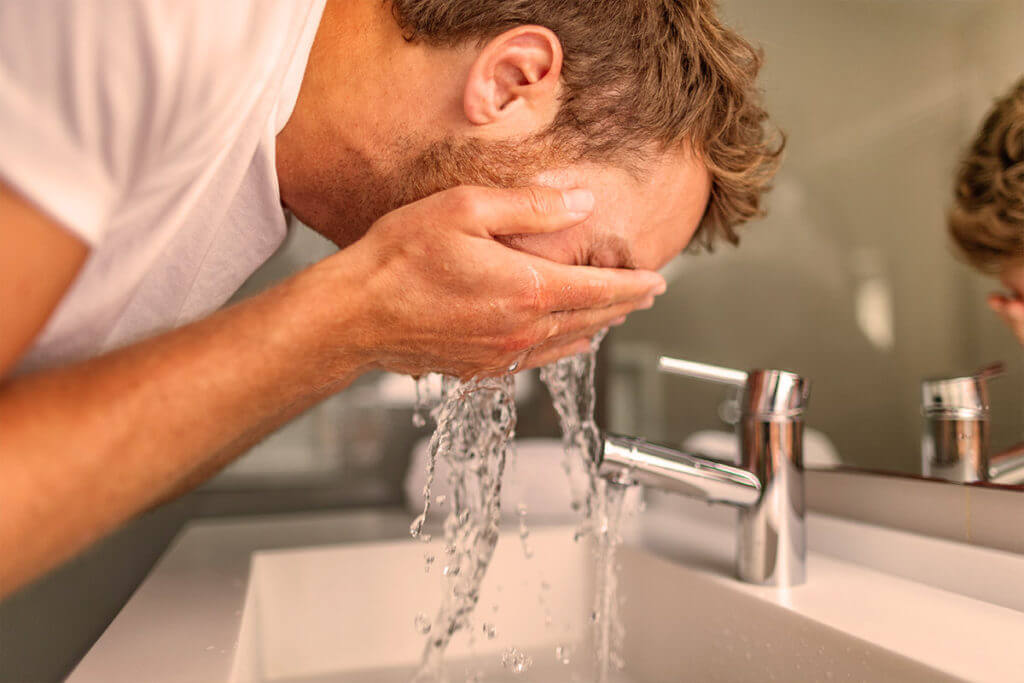
The treatment of perioral dermatitis takes the form of zero therapy. For several weeks, no cosmetics or care products are used and the skin is cleansed with water only.
A good improvement can be achieved with the help of further skin care tips for stewardess disease. Find out more here: Tips & tricks against stewardess sickness. The symptoms should subside after about six weeks.
Sensitive skin can generally be cared for with home remedies such as black tea or aloe vera. In severe cases, antibiotic ointments or antibiotics are also prescribed.
Medication can be used to support zero therapy. A sodium bituminosulfate gel can inhibit inflammation. The application of azelaic acid, for example as a gel or cream, should also achieve this result.
Also effective for inflammation caused by perioral dermatitis: creams containing cortisone or zinc ointment.
If the disease is more advanced and treatment with a perioral dermatitis cream does not achieve results, it is possible to resort to antibiotics or isotretinoin. If in doubt, always consult a doctor.
A natural alternative is to reduce the redness of stewardess disease with bacteriophages. Phages strengthen the bacterial balance of the skin with the power of nature.
Home remedies can also alleviate the symptoms of stewardess disease.

Stewardess disease is characterized by redness and blisters, usually around the mouth. For those affected, this means a reduction in quality of life. With the right measures, the rash can be treated well.
Do you suffer from perioral dermatitis? In this article, we will show you how you can combat the symptoms of the disease with our tips and tricks and prevent it from recurring.
If you suffer from perioral dermatitis, you should refrain from using cosmetics for several weeks. Less is more when it comes to make-up.
Only wash your skin with lukewarm water during this period. Also avoid fragrances, preservatives and softening the towels you use to dry your face. When drying your face, instead of rubbing, it is better to just pat the skin dry.
Too many different creams on stressed skin can aggravate the skin condition. But the right perioral dermatitis cream can help to alleviate the symptoms.
This cream usually contains cortisol and thus improves the papules and pustules on the chin and around the mouth.
Zinc ointments can also be helpful for stewardess disease.
There is no universally effective diet plan for stewardess disease. Nevertheless, it makes sense to try to contain the skin disease with nutrition.
A balanced diet consists of as few processed products as possible. To do this, you should avoid highly sugary and fatty foods. This favors the development of inflammation and impurities on the skin. Therefore, lots of fruit, vegetables and fiber are important in a perioral dermatitis diet.
In other words, if you have irritated skin, it is better not to eat sweets or junk food. Alcohol and nicotine should also be avoided as far as possible if you suffer from rosacea.
During zero therapy, there is often a need to do something good for the skin anyway. Compresses with black tea can be effective.
Compresses with black tea have an acute calming effect on itchy skin. Black tea also has an anti-inflammatory effect.
Due to the fermentation of the tea leaves, it contains anti-inflammatory substances.
To do this, boil the tea, leave to infuse for at least ten minutes, allow to cool and apply to the skin, for example using cotton cloths. This soothes irritation.
The use of bacteriophages also has a positive supporting effect. They help to restore the bacterial balance of the skin and are harmless to humans. Bacteriophages are able to eliminate bad bacteria on the skin by identifying them and then multiplying in them.
You can prevent perioral dermatitis with the tips and tricks mentioned above. You can try them out and observe whether and what changes occur in your skin. After a while you will be able to see what helps your skin.
Probably the most important tip, however, is to keep skin care to a minimum in order to give the skin the time and rest it needs to recover. This allows the skin flora and the skin microbiome to return to their natural balance.
Perioral dermatitis is more than just an undesirable skin condition with various triggers and contributors. Also known as stewardess disease, this chronic skin disease is a common problem, especially for women.
But if it is diagnosed correctly, the disease can be effectively contained with a little patience.
Whether treatment with phages, zero therapy or medication, there are various approaches. The needs of the diseased skin areas must be taken into account. Then a completely normal life is possible without any problems.
Author: Christian Unterlechner, Dipl.-Ing. (FH), MBA
“From our own experience with neurodermatitis – and the long path of suffering associated with skin conditions like this – we started to look for alternative solutions to drug treatments. We are very happy to share the knowledge and experience that has gone into the years of developing our SkinCare products with you.”
Share post